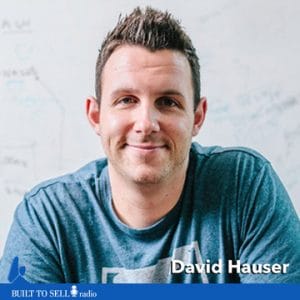About this episode
David Hauser’s Grasshopper is a masterclass in building a business to sell. With no venture funding and fewer than 40 staff, Grasshopper was acquired 12 years after its founding for $165 million in cash and $8.6 in Citrix stock.
To read a transcript of this episode, click here.
David Hauser and his business partner founded Grasshopper in 2004. The company offers a virtual phone system for entrepreneurs, targeting a core market of businesses with 1 to 10 employees. Over the course of 12 years, they grew Grasshopper independently, without outside investment — a rare feat among fast-growing technology companies.
By 2016, Grasshopper was up to $30 million in revenue with gross margins of more than 80%, all from a workforce of fewer than 40 employees. With numbers like that, it shouldn’t be surprising that an industry giant like Citrix was interested in acquiring them. Citrix offered almost six times Grasshopper’s topline revenue with very few strings attached and kept coming back to the table even after Hauser turned them down.
In this episode, you’ll learn:
- The trick to growing a company without outside investors
- What to look for when building your management team
- How to weigh the risks and benefits of a proprietary acquisition versus a competitive sale
- How an escrow can gobble up your sale proceeds and what to do to ensure that doesn’t happen
- How to get prospective buyers to make the first offer
- Why (and how) Hauser avoided an earn out
Hauser and his cofounder Siamak Taghaddos were able to grow Grasshopper to $30 million in revenue in 12 years without outside investors because they charged up front for their service which gave them the cash to grow. Find out how you can turn your company from a cash suck to a cash generator by completing module 10 of The Value Builder System™. Get started now by completing Module 1 for free.
Check out our article on Operator Vs. Investors.

About Our Guest
David Hauser is an Inc. 30 under 30 Serial Entrepreneur, Angel Investor and Speaker. In addition to Grasshopper, he is the Founder of Chargify, a profitable SaaS company with an investment from Mark Cuban, and an angel investor in a variety of successful startups including Intercome, Unbounce, Munchery and Groove. Hauser lives in Las Vegas.


